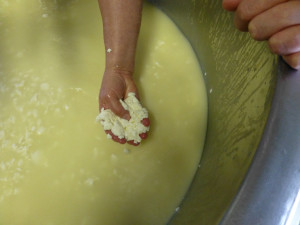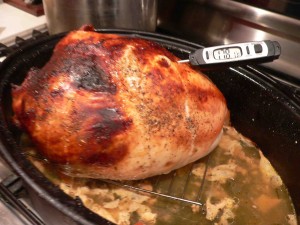Human norovirus (HuNoV) is a foremost cause of domestically acquired foodborne acute gastroenteritis and outbreaks. Despite industrial efforts to control HuNoV contamination of foods, its prevalence in foodstuffs at retail is significant. HuNoV infections are often associated with the consumption of contaminated produce, including ready-to-eat (RTE) salads.
 Decontamination of produce by washing with disinfectants is a consumer habit which could significantly contribute to mitigate the risk of infection. The aim of our study was to measure the effectiveness of chemical sanitizers in inactivating genogroup I and II HuNoV strains on mixed salads using a propidium monoazide (PMAxx)-viability RTqPCR assay. Addition of sodium hypochlorite, peracetic acid, or chlorine dioxide significantly enhanced viral removal as compared with water alone. Peracetic acid provided the highest effectiveness, with log10 reductions on virus levels of 3.66 ± 0.40 and 3.33 ± 0.19 for genogroup I and II, respectively. Chlorine dioxide showed lower disinfection efficiency.
Decontamination of produce by washing with disinfectants is a consumer habit which could significantly contribute to mitigate the risk of infection. The aim of our study was to measure the effectiveness of chemical sanitizers in inactivating genogroup I and II HuNoV strains on mixed salads using a propidium monoazide (PMAxx)-viability RTqPCR assay. Addition of sodium hypochlorite, peracetic acid, or chlorine dioxide significantly enhanced viral removal as compared with water alone. Peracetic acid provided the highest effectiveness, with log10 reductions on virus levels of 3.66 ± 0.40 and 3.33 ± 0.19 for genogroup I and II, respectively. Chlorine dioxide showed lower disinfection efficiency.
Our results provide information useful to the food industry and final consumers for improving the microbiological safety of fresh products in relation to foodborne viruses.
Effectiveness of consumers washing with sanitizers to reduce human norovirus on mixed salad
Eduard Anfruns-Estrada, Marilisa Bottaro, Rosa Pinto, Susana Guix, Albert Bosch










